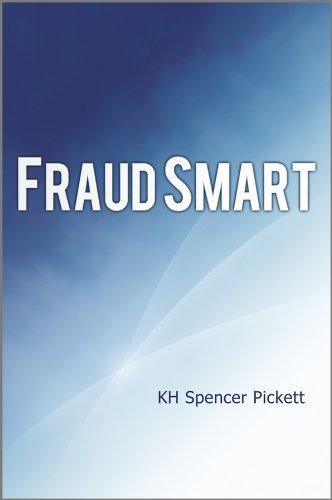Assume Ray's worry value for retention without safety program (WVR) is $1,000 and his worry value for retention with safety program (WVRS) is $600. d. If Ray's decision rule is to pick the option that minimizes TOTAL EXPECTED COST, what risk management option does he choose? Make sure that you show all calculations and clearly define TOTAL EXPECTED COST in each case. [2 points] e. What is Ray's Pmax for full insurance without safety program as opposed to retention without safety? Show all work. [1 point] f. During a meeting, the Chief Risk Officer (CRO) told Ray that the most he would pay for full insurance without safety program (as opposed to retention without safety) is $16,000. What is the CRO's worry value for retention without safety program (WR) ? [2 points] Kimberly-Clark Company owns a warehouse worth \$200,000. Ray Van Eperen is the risk manager. Kimberly-Clark faces the risk of fire which would completely destroy their warehouse. The probability of a fire is known to be 7%. Kimberly-Clark is considering the following risk management options to address the risk of fire to their warehouse: [1] Retention [2] Full Insurance Premium =$14,500 [3] Safety Program + Retention [4] Safety Program + Full Insurance [premium falls to $9,000 ] The cost of the Safety Program is $5,000. It has the impact of lowering the probability of a fire from 7% to 4%. However, if a fire does occur it is still a total loss. a. Construct the loss matrix from Kimberly-Clark's perspective. Make sure you show loss in the top row and out-of-pocket cost in the bottom row in each cell of the loss matrix. [ 4 points] c. What is the actuarially fair premium [AFP] for full insurance without safety program? What is the AFP for full insurance with safety program? Show all work. [2 points] 915817815 Lathaly Lescot AFP=(200,000.07)+(0.7)=14,000 Assume Ray's worry value for retention without safety program (WVR) is $1,000 and his worry value for retention with safety program (WVRS) is $600. d. If Ray's decision rule is to pick the option that minimizes TOTAL EXPECTED COST, what risk management option does he choose? Make sure that you show all calculations and clearly define TOTAL EXPECTED COST in each case. [2 points] e. What is Ray's PMAx for full insurance without safety program as opposed to retention without safety? Show all work. [1 point] f. During a meeting, the Chief Risk Officer (CRO) told Ray that the most he would pay for full insurance without safety program (as opposed to retention without safety) is $16,000. What is the CRO's worry value for retention without safety program (WVR) ? [2 points] g. Who is more risk averse, the CRO or Ray? Explain. [1 point] Assume Ray's worry value for retention without safety program (WVR) is $1,000 and his worry value for retention with safety program (WVRS) is $600. d. If Ray's decision rule is to pick the option that minimizes TOTAL EXPECTED COST, what risk management option does he choose? Make sure that you show all calculations and clearly define TOTAL EXPECTED COST in each case. [2 points] e. What is Ray's Pmax for full insurance without safety program as opposed to retention without safety? Show all work. [1 point] f. During a meeting, the Chief Risk Officer (CRO) told Ray that the most he would pay for full insurance without safety program (as opposed to retention without safety) is $16,000. What is the CRO's worry value for retention without safety program (WR) ? [2 points] Kimberly-Clark Company owns a warehouse worth \$200,000. Ray Van Eperen is the risk manager. Kimberly-Clark faces the risk of fire which would completely destroy their warehouse. The probability of a fire is known to be 7%. Kimberly-Clark is considering the following risk management options to address the risk of fire to their warehouse: [1] Retention [2] Full Insurance Premium =$14,500 [3] Safety Program + Retention [4] Safety Program + Full Insurance [premium falls to $9,000 ] The cost of the Safety Program is $5,000. It has the impact of lowering the probability of a fire from 7% to 4%. However, if a fire does occur it is still a total loss. a. Construct the loss matrix from Kimberly-Clark's perspective. Make sure you show loss in the top row and out-of-pocket cost in the bottom row in each cell of the loss matrix. [ 4 points] c. What is the actuarially fair premium [AFP] for full insurance without safety program? What is the AFP for full insurance with safety program? Show all work. [2 points] 915817815 Lathaly Lescot AFP=(200,000.07)+(0.7)=14,000 Assume Ray's worry value for retention without safety program (WVR) is $1,000 and his worry value for retention with safety program (WVRS) is $600. d. If Ray's decision rule is to pick the option that minimizes TOTAL EXPECTED COST, what risk management option does he choose? Make sure that you show all calculations and clearly define TOTAL EXPECTED COST in each case. [2 points] e. What is Ray's PMAx for full insurance without safety program as opposed to retention without safety? Show all work. [1 point] f. During a meeting, the Chief Risk Officer (CRO) told Ray that the most he would pay for full insurance without safety program (as opposed to retention without safety) is $16,000. What is the CRO's worry value for retention without safety program (WVR) ? [2 points] g. Who is more risk averse, the CRO or Ray? Explain. [1 point]









